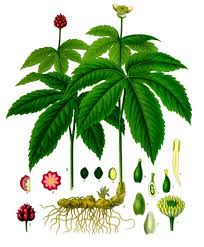
 Hydrastis canadensis, perennial herb in the buttercup family with thick, yellow knotted rootstock and purplish hairy stem, hairy leaves, small flowers and berries resembling raspberries. All parts of Goldenseal are supposed to have anti-inflammatory, antimicrobial, laxative and other medicinal properties. Used in eyewashes and skin lotions, dietary supplements supposed to strengthen immune system and prevent colds. Might have natural contraceptive properties. Should be avoided during pregnancy and lactation, gastrointestinal inflammation, aproinflammatory disorders. High doses my interfere with Vitamin B metabolism.
Comments
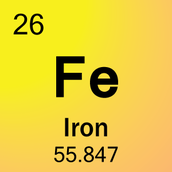 metallic element, Ferrum in Latin, plays a role in the transport of oxygen by the blood. Important for growth, brain development and the immune system Pregnant women, marathon runners, those taking aspirin, with parasitic infections, hemorrhoids, ulcers, gastrointestinal and malabsorption conditions are likely to be iron deficient. High in meat, egg yolks, seafood, beans and lentils, leafy green vegetables.  Species of bacteria in the genus Lactobacillus fermenting sugars (including lactose) into lactic acid. Some strains have probiotic characteristics (for example, L. acidophilus NCFM that decreased the incidence of pediatric diarrhea, and L1 that reduced illness-causing strains of E.coli). NCFM, CL1285, and 36YL strains might have protective qualities against cancer cells. Lactobacillus acidophilus occurs naturally in gastrointestinal tract, mouth, and vagina, and is used in the production of acidophilus-type yogurt (Lactobacillus delbrueckii subsp. bulgaricus). Fermented soyben products miso and tempeh can also be good sources of Lactobacillus acidophilus. Strains Laboratory: NCFM (commercially available since the mid 70s: milk, yogurt, toddler formulas), ATCC 4962, (produces hydrogen peroxide) Scav [IFO 13951, M. Rogosa 210X, NCIB 8690, P.A. Hansen L 917] ATCC 4356 (origin: human intestine) ATCC 9224 (sour milk) CNRZ216 (origin: rat intestine; different fermentation patterns than other L.acidophilus) CNRZ218 Human: HA1, HA2, HA3, HM2, HM6 Pig: PA3, PA12, PA19, P18, P47 Chicken: C1, C2, C3, C7, C11 L. acidophilus AS-1 - Quest International, Rochester, MN L. acidophilus DDS-1 - Capsule supplement, Natren Inc., Westlake Village, CA L. acidophilus HP10 - Northeast Nutraceuticals, S. Boston, MA L. acidophilus HP100 - Northeast Nutraceuticals L. acidophilus HP101 - Northeast Nutraceuticals L. acidophilus HP102 - Northeast Nutraceuticals L. acidophilus HP103 - Northeast Nutraceuticals L. acidophilus HP104 - Northeast Nutraceuticals L. acidophilus HP15 - Northeast Nutraceuticals L. acidophilus PIM703 - Chr. Hansen L. acidophilus SBT2062 - Snow Yogurt + 2, Snow Brand  Also known as milk of magnesia (because of its milk-like appearance when mixed with water), this compound is a common component of laxatives and antacids, used to treat symptoms caused by too much stomach acid. Magnesium Hydroxide and Aluminum Hydroxide are often used together to relieve heartburn, acid indigestion, and upset stomach. They may be used to treat these symptoms in patients with peptic ulcer, gastritis, esophagitis, hiatal hernia, or too much acid in the stomach (gastric hyperacidity). 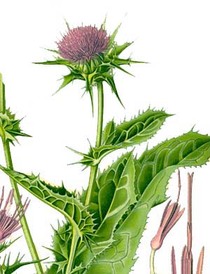 Weed with red purple flowers (Silybum marianum) native to the Mediterranean region. It is related to sunflowers and daisies. It has been used for 2,000 years as an herbal remedy for a variety of ailments, particularly liver, kidney, and gall bladder problems. Several scientific studies suggest that substances in milk thistle (especially a flavonoid called silymarin) protect the liver from toxins, including drugs, such as acetaminophen (Tylenol), which can cause liver damage in high doses. It may have antioxidant and anti-inflammatory properties, protecting against cancer, diabetes and high cholesterol. Milk thistle is generally regarded as safe. It can sometimes act as a laxative, leading to diarrhea and minor stomach issues, such as bloating, nausea, flatulence and lack of appetite. People with a history of hormone-related cancers, including breast, uterine, and prostate cancer, should not take milk thistle. Neither should those allergic to ragweed, chrysanthemums, marigolds, chamomile, yarrow, or daisies. Milk thistle may interfere with the following medications, because both milk thistle and these medications are broken down by the same liver enzymes:
Polyunsaturated fatty acids with a double bond starting after the third carbon atom from the end of the carbon chain. Essential to normal growth and health - human body can’t make them from scratch but must get them from food. Foods high in Omega-3 include marine and plant oils, fish, nuts (especially walnuts), flax seeds, and leafy vegetables (such as Romaine lettuce, arugula, spinach).
There are three main omega-3s: Eicosapentaenoic acid (EPA) and docosahexaenoic acid (DHA) that come mainly from fish, and Alpha-linolenic acid (ALA), found in vegetable oils and nuts, flax seeds and flaxseed oil, leafy vegetables, and some animal fat, especially in grass-fed animals. 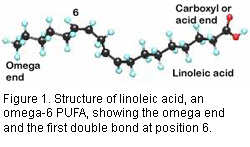
Also referred to as ω-6 fatty acids or n-6 fatty acids, Omega-6 fatty acids play a crucial role in brain function, and normal growth and development. These polyunsaturated fatty acids have their first double valence bond six carbons from the beginning of their carbon chains. Metabolized to n-6 eicosanoids that bind to diverse receptors found in every tissue of the body.
There are several different types of omega-6 fatty acids, some of them promote inflammation but others fight it. Most omega-6 fatty acids in the diet come from vegetable oils, such as linoleic acid (LA, different from alpha-linolenic acid (ALA), which is an omega-3 fatty acid(. Linoleic acid is converted to gamma-linolenic acid (GLA) in the body. It can then break down further to arachidonic acid (AA). GLA is found in several plant-based oils, including evening primrose oil (EPO), borage oil, and black currant seed oil. Omega-6 fatty acids are available in supplemental oils that contain linoleic acid (LA) and GLA, such as EPO (Oenothera biennis) and black currant (Ribes nigrum) oils. Spirulina (often called blue-green algae) also contains GLA. 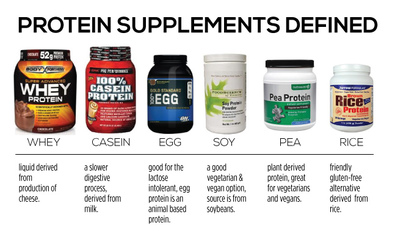 dietary and bodybuilding supplements that supply extra protein. Although they are not supposed recorded measurable amounts of free-form amino acids, which spike protein content in standard laboratory tests but add little nutritional benefit (beyond physiologically appropriate proportions). Asparagine was the most commonly spiked amino acid (15/74 products), followed by alanine (11/74), glycine (8/74), taurine (8/74), and leucine (7/74). Histidine, glutamine, alanine, cysteine, and taurine were the highest-risk amino acids, recording the most severe spikes in our batch analysis, respectively. 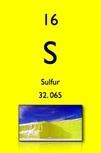
Sulfur or sulphur (in nonscientific British) is a multivalent non-metal mineral, the third most abundant in the body after calcium and phosphorus, concentrated in muscles, skin and bones, and essential for life. In its native form, it is a bright yellow crystalline solid that might have a distinct "rotten egg" smell when water (e.g., humidity in the air) mixes with the sulfur and a small amount of hydrogen sulfide (H2S) gas is produced. Sulfur dioxide gas escaping into the air smells more like struck matches.
Garlic, onions, shallots, and leeks are rich in various organosulfur compounds. Other foods high in sulfur include jerusalem artichokes, asparagus, eggs, tofu, beans, broccoli, Brussels sprouts, cabbage, coffee and meat. As a supplement, sulfur is available in two forms: dimethyl sulfoxide (DMSO) and methylsulfonylmethane (MSM). About 15% of DMSO breaks down into MSM in the body. Both have been touted as treatments for pain. 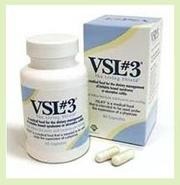 High-potency probiotic with 450 billion live bacteria per packet. Intended for the dietary management of patients with ulcerative colitis (UC), an Ileal Pouch (IP), and irritable bowel syndrome (IBS) Published studies suggest that daily ingestion of VSL#3 DS can aid in the dietary management of Ulcerative Colitis (UC) in both adults and pediatric patients. These studies have also demonstrated that VSL#3 DS can be utilized along with standard pharmaceutical UC therapies such as 5-ASA, immunosuppressants, immunomodulatory drugs and steroids. VSL#3 DS sachets contain Lactic acid bacteria, maltose, silicon dioxide, non-fat dry milk. The lactic acid bacteria in VSL#3 DS are grown in culture mediums that use non-fat dry milk as a fermentation nutrient. Species include:
|
Categories
All
|
